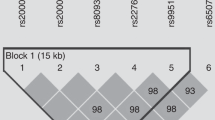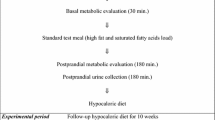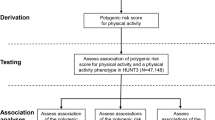Abstract.
Physical activity has been identified as a protective factor against the occurrence and progression of coronary heart disease. The lipoprotein lipase (LPL) HindIII polymorphism has been associated with changes in triglyceride and high density lipoprotein (HDL)-cholesterol levels. We have investigated whether the association between the LPL HindIII genetic polymorphism and lipid levels is modified by physical activity. We have also tested the hypothesis that physical activity may interact with smoking and the LPL HindIII polymorphism to determine an individual's plasma lipid concentrations. A total of 520 men were selected from a representative sample used in a population study conducted in Gerona, Spain. The median value (291 kcal/day) of energy expenditure in leisure-time physical activity of the studied sample was selected as a cut-off to define sedentary or active subjects. Serum HDL-cholesterol was positively and significantly associated with the amount of daily energy expenditure in physical activity, whereas inverse associations were seen between physical activity and triglyceride concentration and with the triglyceride to HDL-cholesterol ratio. These effects were consistent across LPL HindIII genotypes. There was a statistically significant interaction between LPL genotype and smoking on lipid concentrations. No statistically significant differences were observed in lipid levels of active or sedentary non-smokers between H– carriers and H+H+ homozygotes for the LPL HindIII polymorphism. In smokers, sedentary H+H+ homozygotes showed significantly higher triglyceride and lower HDL-cholesterol concentrations than sedentary H– carriers. These differences were smaller and not statistically significant when lipid values of active H+H+ homozygotes were compared with active H– carriers. Among all subgroups, sedentary smokers with the H+H+ genotype had the most adverse lipid profile, which was considerably less adverse in H+H+ smokers who were physically active. These findings suggest that the presence of the H+H+ genotype has a deleterious effect on lipid profile in an adverse environment such as smoking, and that the expenditure of more than 291 kcal/day in physical activity attenuates this effect.
Similar content being viewed by others
Author information
Authors and Affiliations
Corresponding author
Additional information
Electronic Publication
Rights and permissions
About this article
Cite this article
Sentí, M., Elosua, R., Tomás, M. et al. Physical activity modulates the combined effect of a common variant of the lipoprotein lipase gene and smoking on serum triglyceride levels and high-density lipoprotein cholesterol in men. Hum Genet 109, 385–392 (2001). https://doi.org/10.1007/s004390100584
Received:
Accepted:
Published:
Issue Date:
DOI: https://doi.org/10.1007/s004390100584




